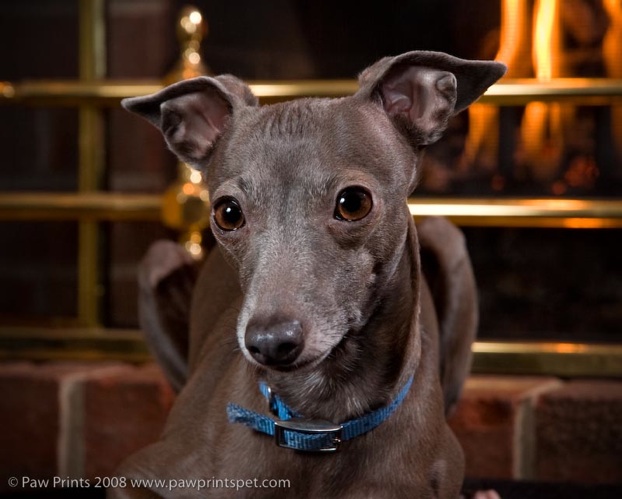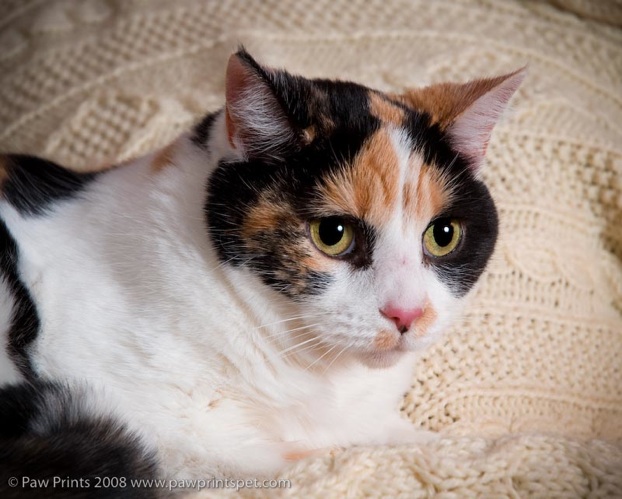
Nikon D3, Two of the World’s Best Professional Action Cameras!
Question: Does Paw Prints really have two Nikon D3 cameras now?
Virgil: We certainly do. We bought the first one in Dec. 2007 and the second one in Nov. 2008.
Question: Why do you need two of them?
Virgil: For a couple of reasons. First, we need redundancy. If something goes wrong with one camera, we need the other one for backup. As you can imagine, all of our equipment is at risk in busy environments full of dogs and people. Second, all cameras experience ordinary wear and tear and need periodic maintenance. Our first D3 is now a year old, and I’ve taken something like a half million images with it. It is now officially past its predicted life expectancy. Nikon rates these professional cameras for 300,000 exposures. My first D3 is still completely usable (or it will be, once it has had a tune-up), but it is important for us to have two production cameras.
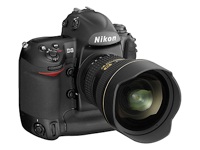
Virgil: From the outside, nothing about the Nikon D3 looks new. Nikon perfected the placement of controls back when they were making film cameras. But inside, everything’s new. The D3 has a revolutionary new Charge-Couple Device (CCD) design. The CCD is the digital “film.” (See the photo below. It shows the camera’s CCD.)
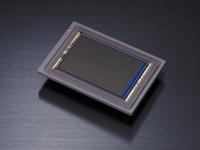
Or, to put it in more immediate terms for people around central and southern Ohio, the new camera has already been proven at the Circle G Arena and Buckeye Ranch. We’ve successfully taken thousands of pictures at both places. I’m especially glad that Paw Prints can photograph at those venues. All professional photographers I know of have previously avoided them because of lighting. Check out the detail in the black dog at the Circle G (top). And look at the detail in the fur of the black dog at the Buckeye Ranch (bottom). Black dogs are definitely no problem for Paw Prints, even in low light!
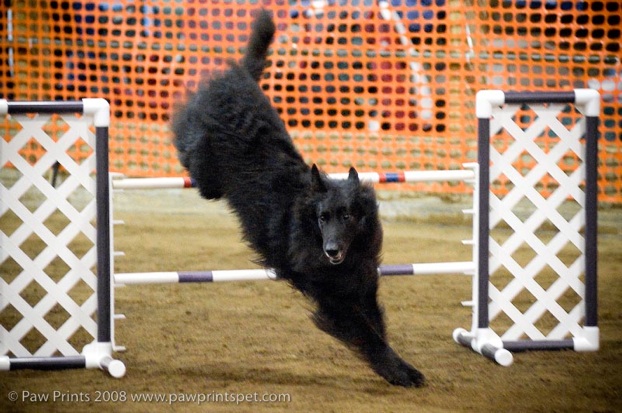
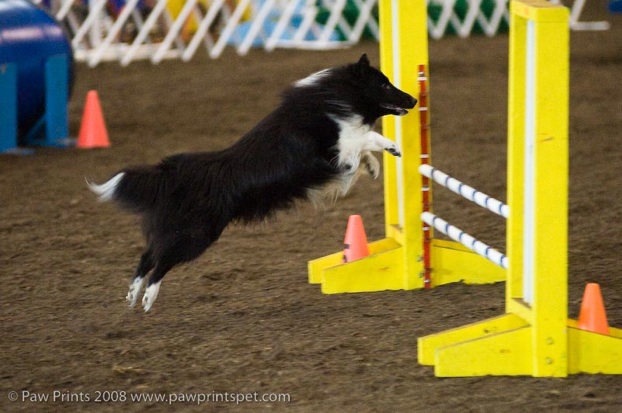
Question: What difference does it make for action shots?
Virgil: The new CCD is four times as sensitive to light as the older camera. That means better shots in darker venues, as you can see in the photos above.
Question: How is this camera different from a standard digital camera?
Virgil: Well, to start with, it costs about $5,000--without a lens!
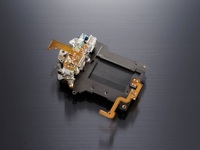
Question: Wow! $5,000! How long will a camera like this last?
Virgil: This camera’s shutter (shown at the right) is rated for 300,000 exposures. That may sound like a lot, but I generally take 10,000 to 20,000 images at a two- or three-day show. At that rate, I’m shooting more than 500,000 images a year. That’s more than a lot of professional photographers take in their whole career!
Question: Okay. I guess I’m recovering from the sticker shock. Back to the differences. What sets this camera apart from a typical digital camera?
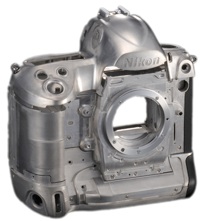
Then let’s talk about megapixels. That’s what people often think of when considering a digital camera. In a professional camera like this one, the issue isn’t the number of megapixels. The issue is really the quality of the pixels and the in-camera processing capabilities. For example, in some cameras that have very high megapixel ratings, only a small portion of each pixel is devoted to light gathering—maybe as little as 10 percent. But in this camera, a much greater amount of the pixel area is used for light gathering, and processing begins right on the CCD. What that comes down to is a much greater level of detail, more accurate detail, and a better representation overall of the scene being photographed.
But after all that, if you’re still interested in megapixels, this camera has 12.1 million. Again, though, be advised that comparing these megapixels to those in most other cameras is apples and oranges.
Here are a few other stats for anyone who wants this kind of detail:
-
•Normal ISO range of 200 to 6,400, which can be expanded to a range of 100 to 25,600
-
•51-point autofocus and focus tracking system
-
•1,005-pixel auto color balance meter
-
•Top shutter speed of 1/8000 of a second
Question: The various manufacturers seem to release new models of their digital cameras at least once a year. How often does Nikon release a new professional camera like this one?
Virgil: There are usually five to ten years between models of professional cameras. It’s been eight years since the release of the Nikon D2Hs, which I’m using now.
Question: What are you going to do with your old Nikon D2Hs camera?
Virgil: I’m going to have it refurbished by Nikon, and then I’ll use it as a backup. I’ll probably need to have the shutter replaced, because it has far surpassed the 200,000 exposures it was rated for. But once it’s refurbished, it’ll be an excellent second camera.
Question: Why do you need such an expensive camera? Couldn’t you do fine with one that costs substantially less?
Virgil: I need it for quality, longevity, and reliability. My customers expect me to produce high-quality images, even in difficult lighting situations. Since it’s not possible to use flash or strobes for action photography, that means I have to use a camera with the best possible light-gathering capability.
Also, there’s an interesting point about the price of this camera in comparison to the first Nikon I bought back in 1970. That was a fully manual Nikon F film camera. I paid $500 for that camera thirty-seven years ago. If you scale that price for inflation to today’s dollars, that $500 camera today would cost about $7,500, and it came with none of the features that the Nikon D3 provides. So you can see that the $5,000 camera today is really a bargain!
Question: Okay, I’m convinced about the value. But can you put the difference this camera will make in real terms?
Virgil: Sure. Two things. The first is about blur. The second is about speed.
No one likes blurry action shots. A dog that’s running agility is moving multiple feet per second. In the best lighting conditions, which usually means outdoors in full sun, the exposure I use is generally 1/2000 of a second or faster. That’s fast enough to stop most action. But when the light is less than ideal, I can shoot action down to 1/160 of a second. At that speed, there can be a lot of blurring. With the new camera’s superior light gathering, I’ll be able to use higher shutter speeds. So a blur that would look 1/4 of an inch long in the image will be reduced to 1/16 of an inch. And a smaller blur will be virtually undetectable. To put it another way, on a typical agility run, I shoot 30 to 50 images. In good light, nearly all of them are good. In poor light, two-thirds or more of them can be unusable. With the new camera, I expect to substantially increase the number of good images, even in poor light.
And then speed. When a dog is whipping through the weaves or bounding over a jump, I try to get multiple shots to ensure that I’ll have great choices for the customer. With my current camera, I can shoot 8 frames a second. But with the new camera, I’ll be able to get 11 frames a second. That’s an almost 50% improvement.
Question: Where can we see some images from the new camera?
Virgil: Check out any of the images on the site that are from 2008. Another advantage of this camera is that it offers billions of colors, which is four times the range of colors of my older camera. The color advantage is especially apparent in portraiture. Check out any of the portraits I’ve taken recently. Here’s an example of a portrait against firelight and another showing a dark-and-light cat against a light background. Look at the beautiful differentiation of shades in the Italian greyhound’s face and the clear differentiation between the white and tan fur of the cat and the off-white background.
